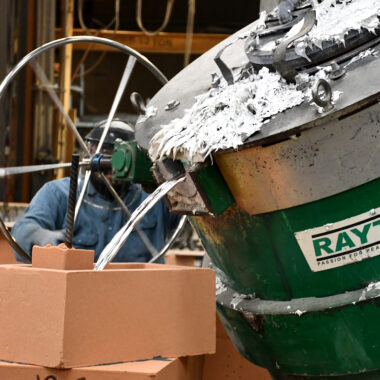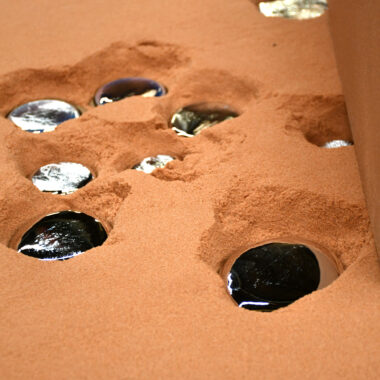Unraveling About Aluminum Casting: From Fundamentals to Competence
Unraveling About Aluminum Casting: From Fundamentals to Competence
Blog Article
Crafting Perfection: Just How to Achieve High-Quality Aluminum Castings Every Single Time
In the realm of aluminum spreading, the pursuit of perfection is a continual journey that needs a careful method and an eager understanding of the complexities entailed. Achieving constant top notch light weight aluminum spreadings requires an extensive understanding of the procedures, from selecting the proper alloy to performing precise mold layouts and meticulously controlling spreading criteria. Nonetheless, the true proficiency depends on the capacity to implement these aspects seamlessly to create remarkable spreadings every time. As we explore the complexities of crafting perfection in light weight aluminum spreadings, discovering the vital strategies and strategies that cause remarkable outcomes becomes vital for those pursuing excellence in this specialized area.
Recognizing Light Weight Aluminum Spreading Procedures
Aluminum casting procedures, crucial in the production market, involve the elaborate transformation of liquified aluminum into solid forms via a collection of very carefully regulated steps. Comprehending these procedures is vital to accomplishing high-grade aluminum castings regularly - about aluminum casting. The primary techniques made use of in light weight aluminum casting are pass away spreading, sand spreading, and financial investment casting

Each of these processes has its benefits and is picked based upon elements like complexity, quantity, and wanted surface of the aluminum spreading. about aluminum casting. Comprehending the complexities of these approaches is critical for producers intending to generate top notch light weight aluminum castings constantly
Selecting the Right Aluminum Alloy
Choosing the proper light weight aluminum alloy is a crucial choice in the production of premium light weight aluminum castings. The selection of alloy significantly impacts the homes and qualities of the final item. Different aluminum alloys use varying levels of toughness, deterioration resistance, machinability, and thermal conductivity. When selecting an aluminum alloy for spreading, it is necessary to take into consideration the specific demands of the application to ensure ideal performance.
Among one of the most typically utilized light weight aluminum alloys for spreading is A356. This alloy uses excellent castability, high strength, and good rust resistance, making it ideal for a large range of applications. 6061 light weight aluminum alloy is favored for its exceptional weldability and excellent mechanical residential properties. For applications needing high stamina, 7075 light weight aluminum alloy is a popular option as a result of its outstanding strength-to-weight proportion.
In addition to mechanical buildings, factors to consider such as expense, accessibility, and post-casting processes need to also affect the selection of the ideal aluminum alloy. By very carefully reviewing these variables, makers can make sure the production of top quality light weight aluminum spreadings that fulfill the desired requirements.
Implementing Correct Mold Design
Establishing an effective mold and mildew style is critical for ensuring the effective production of premium light weight aluminum spreadings. Correct mold layout plays a considerable function in accomplishing the desired features of the end product. To apply an effective mold design, aspects such as material circulation, cooling prices, and component geometry must be thoroughly taken into consideration.
One key aspect of mold and mildew design is ensuring correct dental filling and solidification of the aluminum within the mold dental caries. This entails creating runner and gating systems that help with smooth metal circulation and protect against defects such as air entrapment or insufficient filling. Additionally, integrating cooling channels into the mold and mildew style helps manage solidification rates and minimize the risk of porosity or shrinkage issues.

Controlling Spreading Parameters

Ensuring Post-Casting Quality Checks
To maintain the excellent quality of light weight aluminum castings, detailed post-casting high quality checks are essential. After the casting process is completed, it is important to ensure that the last items satisfy the preferred criteria and requirements. Among the main top quality checks includes examining the surface area finish of the castings to identify any issues such as porosity, cracks, or surface area abnormalities. This aesthetic inspection is typically supplemented by non-destructive testing approaches like ultrasonic screening or dye penetrant evaluation to find inner defects that might jeopardize the honesty of the casting.
Dimensional precision is another crucial facet that Read More Here must be validated throughout post-casting top quality checks. Measurements of essential dimensions and tolerances must be required to validate that the castings adjust to the called for specifications. Additionally, mechanical buildings such as hardness, tensile toughness, and impact resistance may require to be assessed via material testing to guarantee that the castings have the necessary strength and longevity for their intended application.
Verdict
To conclude, attaining high-grade light weight aluminum castings calls for a complete understanding of the casting processes, picking the suitable alloy, designing molds effectively, regulating spreading specifications meticulously, and conducting post-casting high quality checks faithfully. By complying with these actions, makers can constantly create light weight aluminum castings that meet the highest standards of quality and efficiency.
Attaining consistent high-quality aluminum castings demands an extensive understanding of the processes, from choosing the appropriate alloy to implementing specific mold layouts and thoroughly regulating casting parameters. The primary techniques utilized in aluminum casting are die spreading, sand spreading, and financial investment spreading.
Investment casting, likewise recognized as accuracy spreading, entails anonymous producing wax patterns that are coated in ceramic to form molds.Choosing the proper aluminum alloy is an important find out decision in the production of high-grade aluminum castings.Ensuring accurate control over casting criteria is vital for keeping uniformity and high quality in aluminum casting manufacturing.
Report this page